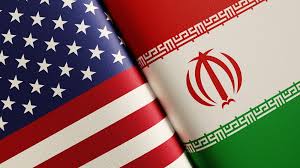Why the US Should be more Worried About Iran’s Ballistic Missile Inventory

In the wake of the recent attacks on US ground forces in Iraq by Iran, many believe that the lack of casualties should allow for deescalation. President Trump is taking the opportunity that Iran gave, instead of military retaliation he is imposing fresh economic sanctions to punish Iran. But while many are sighing relief, we should be slightly more wary.
I am not saying that there should be panic, but there should be more vigilance about the weapons used in the attack. Missiles, not just your typical cruise missile, but ballistic missiles.
What is the difference? Well for starters, cruise missiles only carry conventional warheads, your typical bomb. The US developed Tomahawk cruise missile is a common one that you may have heard of. These types of cruise missiles were used in retaliatory strikes against the Syrian government for its use of chemical weapons against its own people. Additionally, Tomahawk missiles have a range of 1,550 miles and fly exclusively in the atmosphere.
Ballistic missiles can carry the conventional explosive, and specialized payloads such as weapons of mass destruction (WMDs). Nuclear, biological or chemical weapons can be miniaturized and packed into the tip of the missile. Ballistic missiles also enter a brief sub orbital flight in order to maximize range.
Ballistic missiles can be categorized into five categories, Short Range Ballistic Missiles (SRBM), Medium Range Ballistic Missiles (MRBM), Long/Intermediate Range Ballistic Missiles (LRBM/IRBM) and the class that is most well known, Intercontinental Ballistic Missiles (ICBM).
Iran possess no ICBM class ballistic missiles, but the secretive “Project Koussar” is believed to be an attempt at building an ICBM.
In Iran’s case, they used ballistic missiles to attack US positions in Iraq. However, Iran does possess weapons of mass destruction. During the Iran-Iraq War, Iran began developing chemical weapons factories in response to the US supplying Iraq with chemical weapons.
Today, it is suspected that Iranian factories are built in a way to allow for a faster conversion to wartime production, which in the worst case scenario would include Iranian VX nerve agent.
Iranian biological weapons research is quite mature, with late stage development of weaponized anthrax, plague and cholera.
However, the Iranian nuclear program has been the chief WMD that people and world governments focus on. The since failed 2015 nuclear deal that would have slowed Iran’s progress towards creating the bomb in exchange for lifting economic sanctions was breached in June of 2019 when Iran claimed to have surpassed its enriched uranium limit. While the US may have withdrawn from the deal in 2018, other western nations continued to abide by the deal.
Of course in the post-Cold War world, dropping a crude nuclear weapon from a slow subsonic bomber would never succeed. But it is not possible to put a bomb of a large size into the tip of a ballistic missile. The nuclear warhead must first be miniaturized.
This is where many see the ballistic missile threat fall short, Iran has yet to detonate a nuclear weapon. The US’s first nuclear bomb, Trinity, was a large and bulky contraption that was first tested in the New Mexico desert. Miniaturization is a second step to achieve nuclear parity with the United States. A smaller warhead must be packed inside the missiles tip, something that nuclear powers such as Russia, China and the United States have been able to do in the decades since their nuclear programs succeeded in detonating their first weapons.
A staple of US miniaturization is the Minuteman III. It contains three Multiple Independent Reentry Vehicle (MIRV) thermonuclear warheads. A device such as the Minuteman III is decades away from being developed by Iran.
So what happens if Iran builds a missile that can hit the mainland United States? The US spent decades attempting to develop a countermeasure against the Soviet Union and their ICBMs. While research and systems are extensive, they are unproven. While US Navy Aegis Combat System can intercept a target travelling faster than an ICBM, however the system reportedly would have difficulty hitting a missile target that is already mid flight. Other US systems such as the Terminal High Altitude Area Defense (THAAD) has been proven to intercept exoatmospheric missiles following North Korean missile tests in 2017.
Is there a threat to the US as a whole from the Iranian ballistic missile arsenal? Not particularly. But the implications of ignoring the potential sophistication of the arsenal that they possess would be blissful.











